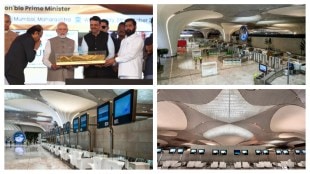By Dr. Preeti Goyal
Telemedicine was the curve ball, the game-changer in the health tech ecosystem hedging individuals and people globally during the Covid-19 pandemic and in the post-pandemic timeline – surging ahead on the 3G and 4G infra bandwidth. With 5G being set in motion the telehealth industry stands to gain in entirety the prima facie benefits of mobile network technology. 5G is set to become one of the key vertices supporting breakthroughs and advancements along with IoMT (Internet-of-Medical-Things), AI-ML (artificial intelligence & machine learning) in innovative healthcare.
Historically, a doctor-patient association thrived on a one-on-one basis, however with the advent of newer tools and amalgamation of technology with healthcare, enhanced by the criticality of the pandemic – people sought healthcare through telemedicine. Telemedicine is a convergent platform of healthcare, med-tech, telecom and IT (information technology). It connected the masses with healthcare professionals and specialists on a tech-telecom robust platform on which was provided consultations, home healthcare and physical and mental health management. The implementation and adoption of 5Gtechnology will charge the telehealth industry with superior and seamless wireless connectivity, greater bandwidth, minimal latency (delay) in data sharing, sharing higher resolution images and videos thereby increasing the real time connectivity value resulting in better patient outcomes.
Remote monitoring has become feasible with the help of IoT (Internet of Things) devices. Healthcare providers can and are monitoring individuals’ health data to help in providing timely and personalized care in sickness and in health. It also makes for increased patients involvement and engagement in bettering their own health and lifestyle. One of the major hindrances to the success of remote monitoring is the capacity of networks to handle large volumes of data. When the connection is unsteady and slow, healthcare service providers decision-making speed gets hampered thereby adding to the delay in implementing care. With 5G real-time remote monitoring will become easier as this telecommunication technology has manifold capacity to manage a large number of connected devices across their geographical presence, thereby maximizing remote monitoring for a larger segment of patients.
5G emphasizes on speed, security and real time large data transmission which are becoming an integral part of the healthcare automation process. Remote ICU and surgeries are seeing immense success. Success stories of remote surgeries are coming to the fore with the precision use of technology through a combination of AR (Augmented Reality), VR (Virtual Reality), haptic feedback gloves, AI and robotic surgical inputs in synchronization with high-speed live streaming to specialist surgical and supporting expert teams. The coordinated efforts are yielding better traction and adoption of tech guided remote surgeries.
Going forward the 5G bandwidth percolation promises to give secure and more reliable services for healthcare interventions, better home healthcare, remote ICU patient monitoring, along with critical care services. 5G connected ambulances along with eMHR (electronic Medical Health Records) access can provide better preparedness and risk mitigation while the patient is being transported. The quick implementation and adoption of 5G in the healthcare ecosystem will increase responsiveness and help negate risks by increasing efficiencies, accuracy of real time data with interconnected discipline) thereby changing the dynamics of healthcare management in foreseeable time.
(The author is Medical Director, vHealth by Aetna. Views expressed are personal and do not reflect the official position or policy of the FinancialExpress.com.)









